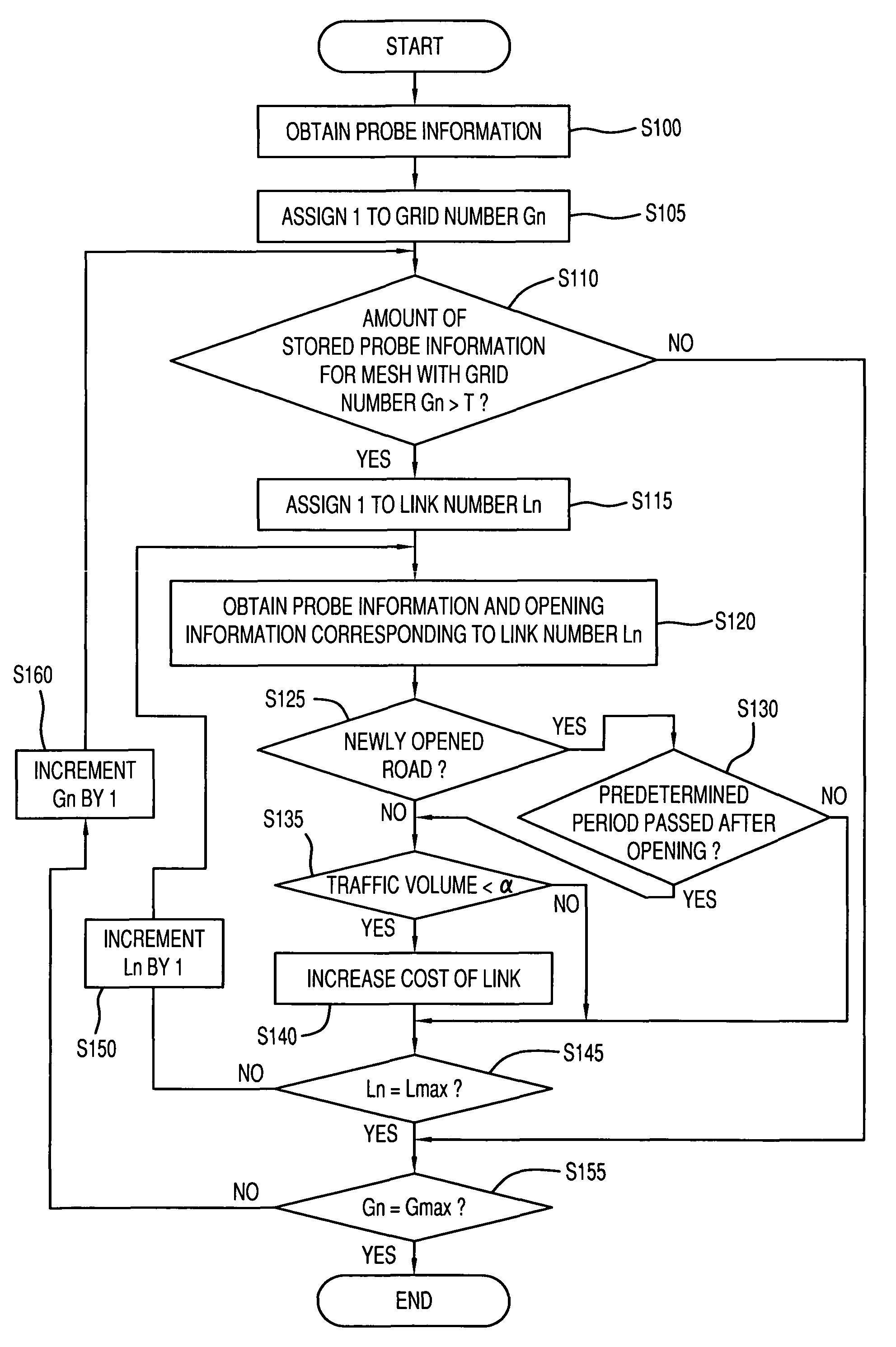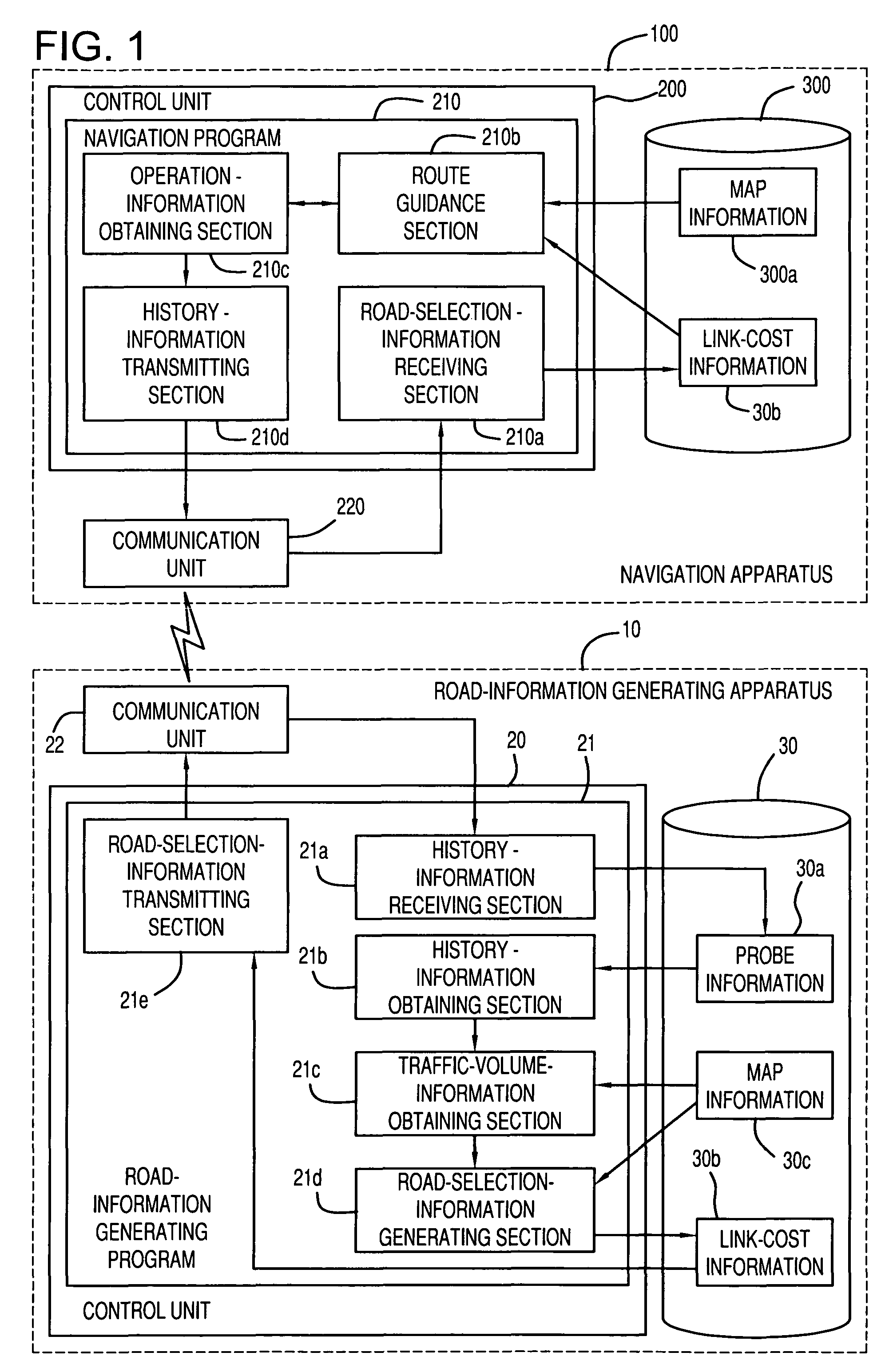Apparatus, method, and program for generating road information
a technology of information and apparatus, applied in the field of apparatus, a method, and a program for generating road information, can solve the problems of link cost preset, increased costs of congested roads and closed roads, and increased costs of closed roads
- Summary
- Abstract
- Description
- Claims
- Application Information
AI Technical Summary
Benefits of technology
Problems solved by technology
Method used
Image
Examples
Embodiment Construction
[0030]Embodiments of the present invention are described below in the flowing sequence:
(1) Configuration of the Road-Information Generating System
[0031](1-1) Configuration of the Road-Information Generating Apparatus
[0032](1-2) Configuration of the Navigation Apparatus
(2) The Road-Information Generation Method
(3) Operation of the Navigation Apparatus
(4) Other Embodiments
(1) Configuration of the Road-Information Generating System
[0033](1-1) Configuration of Road-Information Generating Apparatus
[0034]FIG. 1 is a block diagram of a system including a road-information generating apparatus 10 located at a road-information management center and a navigation apparatus 100 installed in a vehicle. The road-information generating apparatus 10 includes a control unit 20 and a storage medium 30. The control unit 20 has a CPU, a RAM, a ROM, and so on for execution of programs stored in the storage medium 30 and / or the ROM. In the present embodiment, the control unit 20 can execute a road-informa...
PUM
 Login to View More
Login to View More Abstract
Description
Claims
Application Information
 Login to View More
Login to View More - R&D
- Intellectual Property
- Life Sciences
- Materials
- Tech Scout
- Unparalleled Data Quality
- Higher Quality Content
- 60% Fewer Hallucinations
Browse by: Latest US Patents, China's latest patents, Technical Efficacy Thesaurus, Application Domain, Technology Topic, Popular Technical Reports.
© 2025 PatSnap. All rights reserved.Legal|Privacy policy|Modern Slavery Act Transparency Statement|Sitemap|About US| Contact US: help@patsnap.com



